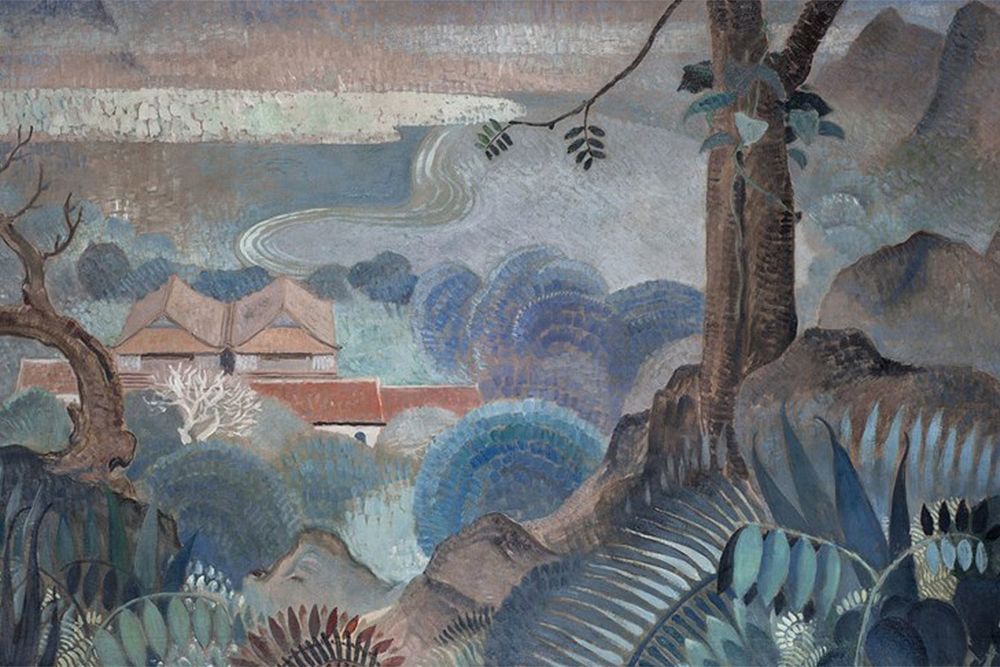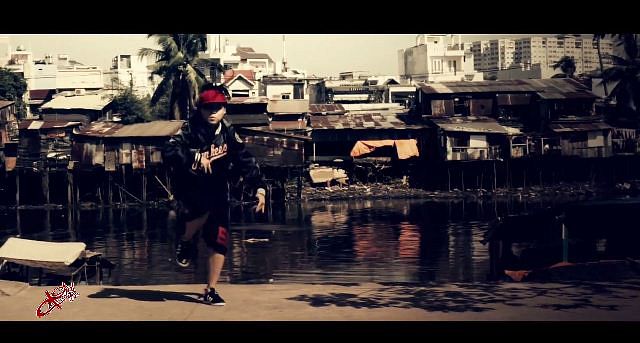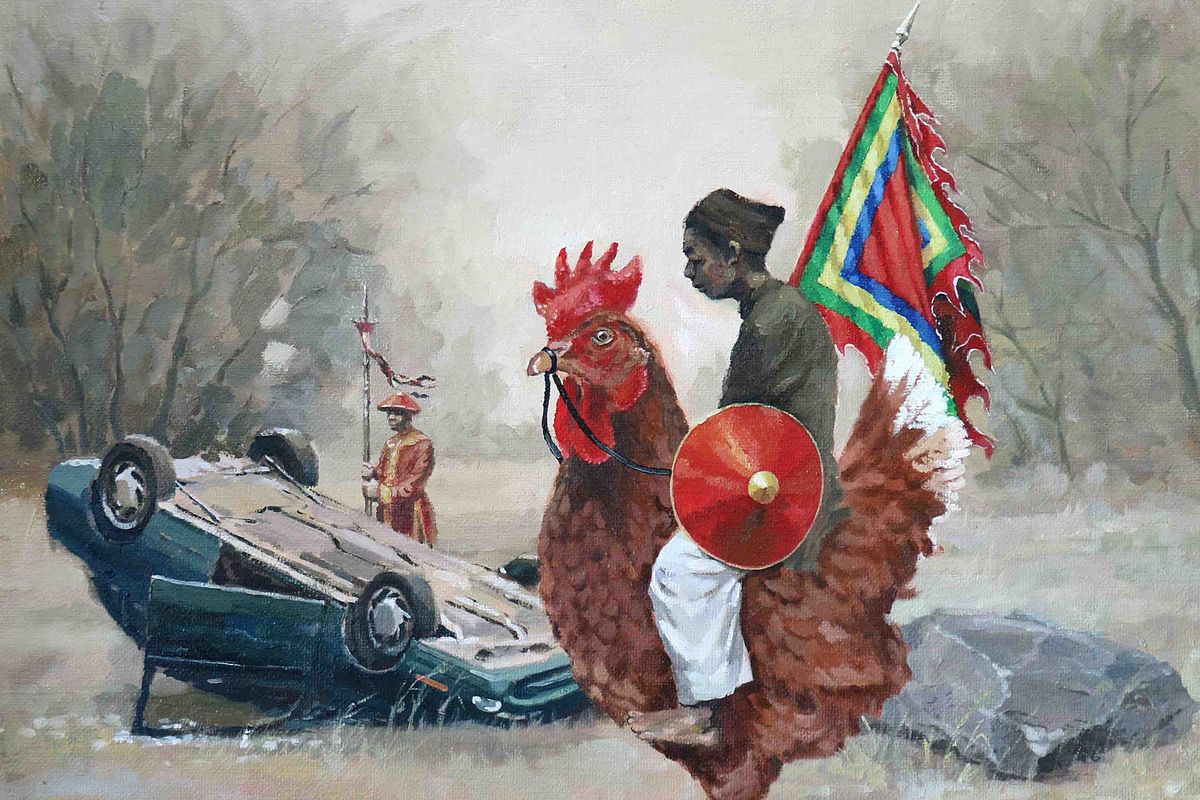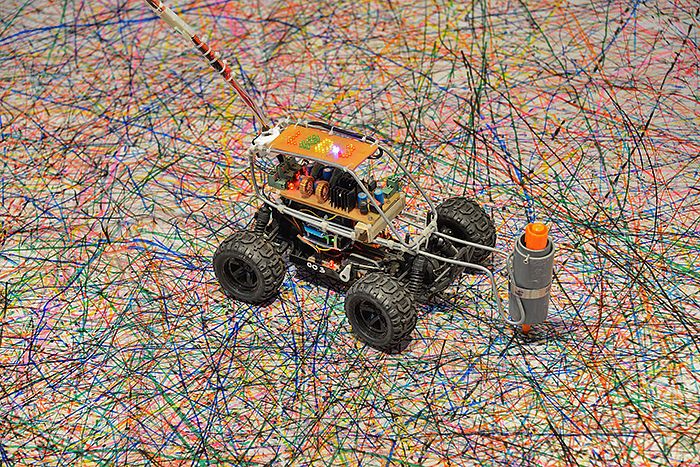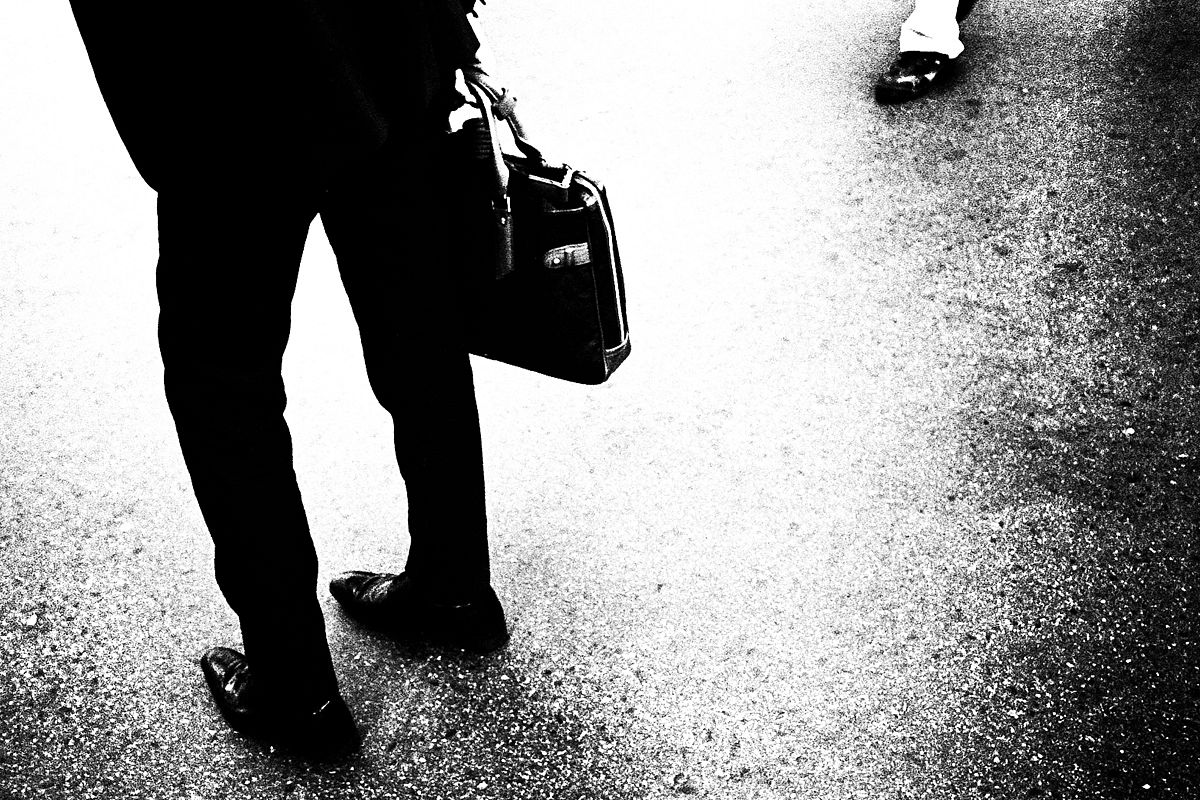Leonid Keller is the first and only exhibition in Saigon by Berlin-based artists Julia Ossko and Eugen Schulz.
During their four-month stay in Vietnam, they have created a new body of work including murals at Saigon Outcast and 3A Station.

'The Clerk', murals at 3A Station - image courtesy of the artists.
Their homonymous show, on display at deciBel Lounge from the 12th of February, consists of four collages, a series of ink drawings, a mural, a video and a screenprint.
“We work very closely with the place where we will show our art. Most of the pieces were made specifically with the layout of the venue in mind,” explained Ossko.

'Danny the Shark' ink drawing. Decibel (2015) - image courtesy of the artists.
Traces of Vietnam surface in some of the work. “Initially, we were looking for old photographs and books to use for our collages, but we found these items very difficult to obtain. In Germany, you go to the street market and you can find all sorts of old images etc. It seems that people in Saigon are not very interested in the past but more in the future.”
The inspiration for the mural came by incorporating two pictures, one from the North of Vietnam and the other from Phu Quoc; the two pictures were assembled and cut, collaged and painted on the wall. “It is likely the same for every country you travel to, but we have found that there is something about Saigon that it is hard to access - everyday life in the city and its people. You spot little traces of intimacy and your imagination runs wild, filling in the gaps with the stories of people around you.”
The other portion of the exhibit is centred on the artistic experiences that the two artists had in the German and Berlinese creative community, “many people probably do not know or do not have the chance to go to Berlin, so we decided to provide glimpses of the artistic scene in our country.”
Leonid Keller was formed after Julia Ossko, Eugen Schulz and Danny Gretscher met at a group exhibition (involving around 20 artists) at Neu West Berlin, “our works were displayed next to each other and they seemed to have a continuity,” explained Schulz.

Neu West Berlin 2013 - image courtesy of the artists.
In the summer of 2014, a successful show followed and they began, alongside their own individual endeavours, to work together as a collective, “we started creating pieces together, sharing ideas, images and materials. If you are someone that cherishes the value of exchange, then this process makes you stronger,” continued Schulz.
Ossko primarily focuses on ink drawings, while Schulz works on collages. Though their artistic mediums may differ, there is a strong sense of unity and effortless creative communication between the two. As Ossko recalls, “when we met, we had similar ideas, so much so that when I showed his work to my friends, they thought it was mine.”
“Danny and I have the same curator, share the same studio and have similar tastes. If I am working on a collage and she doesn’t like it, I trust her opinion. We both suggest images or materials to each other and then hang our pieces together on the wall. It works. I don’t know how it happens but it does,” added Schulz.
Further, they do not seem to be interested in having their individual input in an artwork recognised. “We may use Leonid Keller as a platform for our collective works, but the art experience exists independently from the artist, it does not matter which part is mine and which one is his.”
On what they are seeking while working with new images:
“There is always a common humanity that can be found in every image that goes beyond the individual,” said Ossko, “for me it’s about deconstructivism: taking parts and rearranging them together or deleting some portions to tell a new story,” said Schulz.
An example of retelling stories and events can be found in their installations based on the yearly books ’78 and ’84 (when he two artists were born) of the magazine Weltrundschau published by Weltwoche. The two glass installations are made by rearranging and extracting images from each month of the respective years and collaging them together to narrate the first year of the two artists’ lives.

Weltrundschau 1984, Collage (2014) - image courtesy of the artists.
After departing from Saigon, they will hold an exhibition in Berlin comprised of installations and collages made of old photographs found in Saigon’s markets, pages from the book l'histoire vécue de la guerre 14-18 by Pierce G. Fredericks (1964) and images from the Red Book which narrates the glorious days of Ho Chi Minh's Communist Party of Vietnam (published in 1976).


